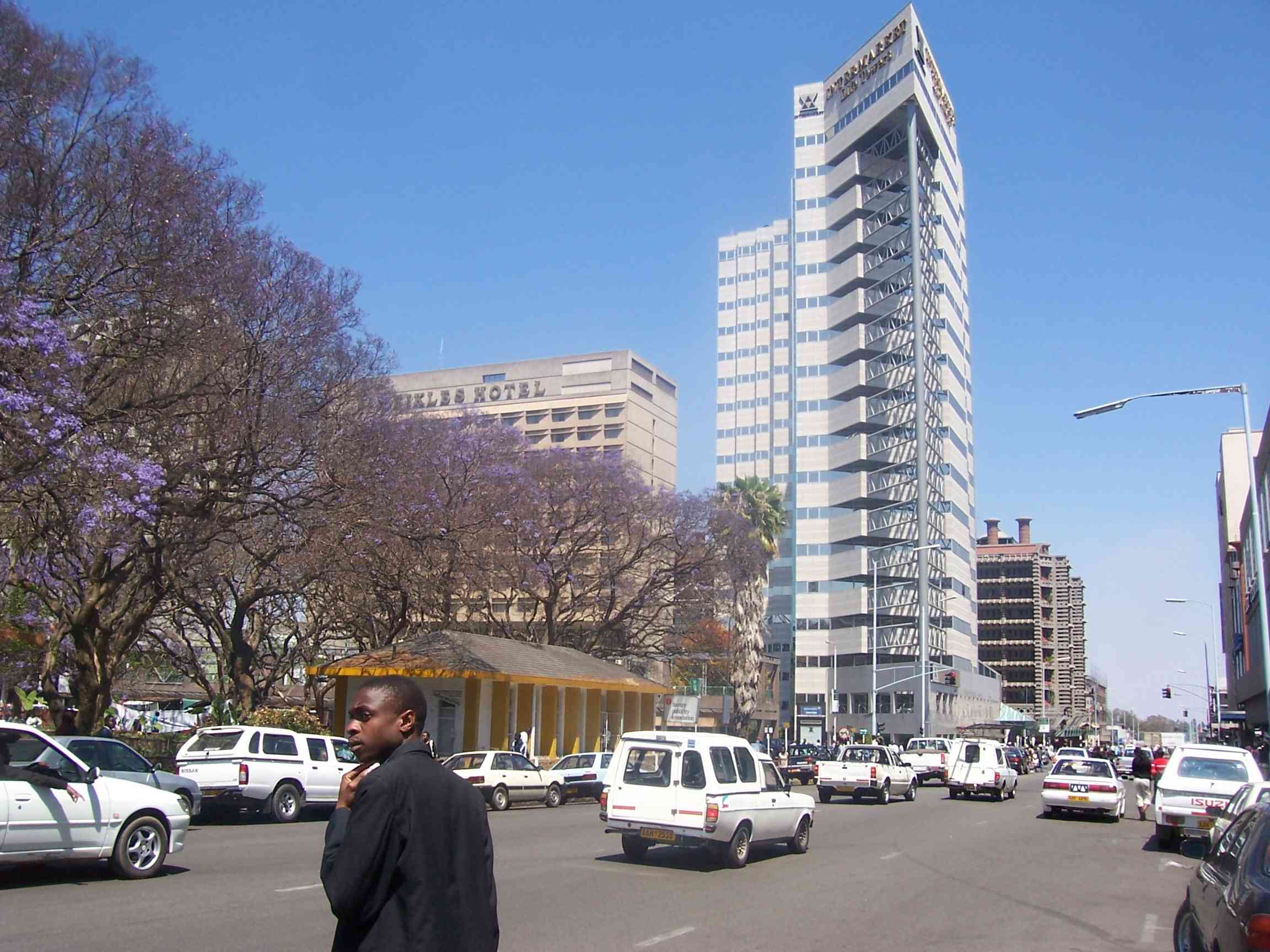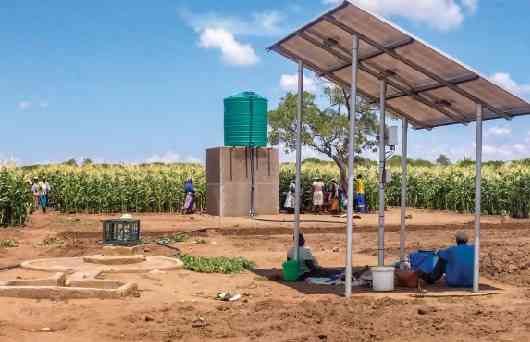
THE year 2020 came with overpowering economic problems, as countries around the world had to deal with the Covid-19 pandemic. Lockdowns were introduced, as consumption expenditure tumbled, and the global economy contracted by a record 8,8%.
In efforts to revive the dearth of activity in economies, governments created stimulus packages, whilst central banks cut interest rates, to impact money supply and revive growth.
The intervention by authorities worked, as the contraction could have been worse and recovery prolonged, without them. Most economies rebounded the following year, and global growth in 2021, was an impressive 8,5%.
However, there has been a persistent inflation problem, which emerged, as economies heated on account of the growth.
The reasons for the prolonged global inflation are mostly pandemic-related. These include supply chain constrains, fiscal and monetary responses to the pandemic, profiteering and also the ongoing war between Russia and Ukraine. Explaining them in more detail should provide essential clarity.
The world has had a quicker and more firm recovery from the pandemic than expected. In most economies, demand for goods and services (especially goods), went up faster than the supply chains could possibly meet.
The lockdowns and requirement for workers to be vaccinated in most states led to production backlogs or deficits, running into several weeks, sometimes, months.
With a proportion of workers resisting vaccinations, there was shortage of labour on factory floors, warehouses and in freight, etc.
- The key to building local economies is to invest in human capital
- Blinkered loyalty to corrupt leaders is not patriotism
- Africa needs national CCTV technology policies
- Long-term planning can get rid of land barons
Keep Reading
There has also been a shortage of capacity, drivers, and space at commercial ports, in the distribution value chain.
As a result, inventories were low and freight costs much higher, especially from early 2021.
This also added to reduced competition, as less goods were made available, resulting in constant price hikes for the market.
A look at the shoe manufacturer, Nike, for an example, shows that much of their production is done in Vietnam. Lockdowns in the Asian state set the company's production backwards, by about two months.
Additionally, it was taking an average of 80 days to get the shoes from Asia to retailers in North America throughout 2021, which is twice as long, as before the pandemic.
Resultantly, shoe prices were soaring, just as, almost everything else, around the world. Such supply chain dislocations, fed into higher prices.
On the electronics side, there was, a massive global shortage of semiconductors and chips since 2020, which remains to date, although now, moderate.
The chips are used in the manufacturing of vehicles, smartphones, personal computers, and household appliances. To arrive at this level of scarcity, it was as a result of various issues, including accidents and damage caused by extreme weather conditions in some parts of the world.
For example, in Taiwan, the global leader of the semiconductor industry, there was a severe drought in 2021, which led to a shortage of ultra pure water to clean factories and for running the production process.
The drought was the worst in 50 years. In Texas, United States, three major manufacturers, including Samsung, halted production, owing to a severe winter storm, which set back production from these plants by several months.
There were also acute fire outbreaks, affecting key Japanese and German manufacturers, from the latter half of 2021 to early 2022.
The war between Russia and Ukraine has also led to a shortage of neon gas, which is vital in the production of chips. Ukraine is a supplier of almost 50% of the world's neon requirement.
Additionally, since the emergence of Covid, there has been a massive rise in demand for both desktop and personal computers, as more companies began to emphasize the importance of working and learning from home, etc. Such supply chain issues have made a considerable impact towards persistent global inflation.
The fiscal and monetary responses by governments, with the aim of curtailing the impact of lockdowns, created inflationary effects, in most economies.
In the US, the CARES Act and American Rescue Plan Act, for instance, provided almost US$5 trillion in stimulus spending, which was aimed at households, businesses, education, healthcare, etc.
To add to government responses, central banks across the world began to cut interest rates in order to stimulate credit creation, with the ultimate goal of increasing consumer spending and investment.
Most developed economies maintained their rates below 1%. Such policies, invariably increase money supply. As there is a positive relationship between money supply and inflation, prices ultimately shot up.
Price gouging can be described as a phenomenon were businesses raise prices to unfair levels, as a result of pure greed, in the quest to raise profits.
Some companies began to take advantage of the supply chain disruptions, the war in Ukraine, and post-covid demand recovery, as a basis for raising prices fiercely. Consumers have largely maintained demand since then, thus the prices have been sustained at those inflationary levels. This corporate habit is now referred to by some as "greedflation".
The European Central Bank reported that despite attempts by regulators across the world to tame prices, several businesses have been using the post-Covid increase in demand, as a rare opportunity to raise prices.
As a result of the "greedflation" phenomenon, corporate profits hit a record high in 2021, with pre-tax profits at a sizeable 25% in the US, according to the Commerce Department, outpacing 7% CPI, for the same period.
The Russia and Ukraine war has had a great impact on raising prices, globally. Since Russia is a top exporter of both natural gas (world's largest) and oil, the disruption led to higher prices. The increases were more sharply felt within the EU as the bloc imposed sanctions on Russian oil and gas, as a protest to the invasion of Ukraine.
They had to find new suppliers, such as India, who are, ironically, selling the same Russian oil. This led to even higher costs for the EU. Energy prices then skyrocketed, as, gas prices increased by more than 450% and electricity by 230%, in less than a year, since the invasion. Additionally, Russia is the world's largest supplier of fertiliser, accounting for 23% of global ammonia exports and 14% of urea exports, as of 2022.
There was, therefore, a rise in global fertiliser prices between 31% and 148% between 2021 and 2022, as the war commenced, and this fed into higher global food prices.
With the war, also came production and trade disruptions in global corn and wheat exports. Ukraine traditionally produces 11,5% of the world's wheat market, whereas Russia's share is 16,8%.
With regards to corn, Ukraine typically supplies 17% of the world's export market. Barley, rapeseed and sunflower oil are also grown in considerable proportions in the two countries.
Having described the sources of the lingering inflation, it should suffice to have a brief outline of what some key economies have been adopting as means to contain the price hikes.
In the Eurozone, inflationary pressures were non-existent as they were a negative -0.2% in August 2020. There has since been a record increase in inflation to 10,7%, in October 2022, the highest since records for the Eurozone began in 1997.
Energy and food prices were notably much higher than before the pandemic. The European Central Bank began hiking interest rates, with the goal to reduce money supply and cool the economy.
Governments in the zone have also introduced energy subsidies in order to address welfare concerns, as a result of the rampage of energy and fuel prices.
Some countries in the zone have placed price caps on fuel and energy.
Trade profits have been limited by policy in other areas. After about more than a year and a half of central bank and government intervention, inflation is softening from a peak of 10,7% in October 2022 to 7% in April 2023.
In Argentina, galloping prices were worsened by a severe drought in 2022. Food has become more expensive as farmers have lost harvests of crops and livestock. In response, the government has introduced political measures, such as price caps for certain commodities.
If applied with ample discretion, there may be desirable results, as profiteering is addressed, for basic commodities. However, a lack of proper application and discretion may cause food shortages.
The central bank of Argentina has also been relentlessly lifting interest rates, which are currently at 97%. With inflation at its highest (109%) since 1991, such measures may be notable efforts towards reclaiming the value of the local currency, the Argentinian Peso.
In China, inflation has not been an issue of concern to authorities. Unlike all other major economies, Chinese consumer and producer price indices have largely been stable in the last three years, with marginal negative figures for the latter.
Instead, there have been reports of possible deflation in the future, for the Asian nation, although senior bureaucrats insist that low and benign inflation will be the reality.
In August 2020, the inflation rate in China was 2,4%, exactly two years later, it was largely the same, at 2,3 %, in 2022.
In March 2023 the rate saw a marginal annual growth of only 0,7% for CPI, and a negative -2,5% for PPI (Producer Price Index).
In the US, the Federal Reserve has been persistently raising interest rates, which now sit at between 5%- 5,25%, the highest in 16 years. With the labour market still registering growth, policy makers still have some space to further raise the rates, if price pressures linger. As of April, CPI is now showing signs of stabilizing, at 4,9%, a huge difference from the peak of 6%, in February.
Congress has also enacted a new law, the Inflation Reduction Act (IRA), which targets to control spiking prices and reduce government budget deficits.
The International Monetary Fund (IMF) has predicted that world inflation will continue into next year, and probably beyond. However, it should cool down from 8,8% in 2022 to 6,6% in 2023, and then, approximately 4,3% in 2024.
As the price hikes continue, the goal of governments and apex banks around the world is to manage the increases and also provide a soft landing for their economies.
This implies that interventions by regulators will strive to limit the unwanted effects of reduced employment, credit repayment default, and recessions, as they invoke their various policy tools and mechanisms.
Extreme interventions will more likely lead to undesirable results, the worst being the collapse of financial markets and economic depression.
Tutani is a political economy analyst. — [email protected]











